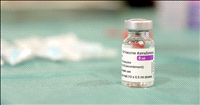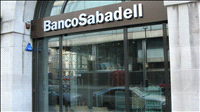Production - industry
By Industry | 10 Apr 2007
1.19 Industrial growth (as per the Index of Industrial Production) has shown a firm recovery this year with 6.2 per cent growth in April-December 1999, as compared to only 3.7 per cent in April-December 1998 . The cyclical downturn in industrial growth, which started in 1996-97, showed some signs of recovery in 1997-98. This was however prematurely aborted by political uncertainty followed by the twin effects of the Asian crisis, (including its aftermath of the Russian and Brazilian contagion) and the post Pokhran sanctions. It reached its nadir in 1998-99 with a growth rate of 4 per cent. Underlying the cycle in industrial growth is a manufacturing growth cycle, which also reached its lowest point of 4.3 per cent in 1998-99. Manufacturing growth this year at 6.7 per cent during April-December 1999 was 1.7 times the 3.9 per cent witnessed in the corresponding period of last year. The improved performance of the electricity sector also contributed to the industrial recovery.
1.20 The broad-based nature of the recovery is apparent from the use-based classification. Basic goods, intermediate goods, and consumer goods have all shown an up turn in growth. During April-December 1999 (April-December 1998) their growth rates were 5.1 per cent (1.9 per cent), 8.7 per cent (5.2 per cent) and 4.9 per cent (2 per cent) respectively. Within the consumer goods sector growth has recovered in both non-durable and durable sub sectors, to 2.9 per cent (from 1.6 per cent) and 11.9 (from 3.8 per cent) respectively. Though the sharpest recovery has been in basic and consumer goods neither of these have yet attained the growth rate attained in 1997-98. This indicates the scope for continued recovery. The cyclical nature of the downturn has been most closely reflected in the consumer durable sector. The sharp recovery to 11.9 per cent growth for April-December 1999, well above the 7.8 per cent growth rate for 1997-98 is therefore encouraging.
1.21 Capital goods production has in contrast followed a different growth pattern than for overall manufacturing. The growth rate of 6.6 per cent for April-December 1999 is lower than the 11.3 per cent recorded last year when it remained immune to the overall downturn. The decline in imports of capital goods, which started in 1996-97, has further accelerated in 1999. Imports of capital goods during April-November 1999 were about 30 per cent lower than their US $ value in April-November 1998. This followed three years of declining imports. The proportion of imported capital goods in the total investment (machinery & equipment) has therefore declined sharply since 1995-96. For the same reason, investment in machinery & equipment has grown slower than the IIP for capital goods, which measures domestic production.
1.22 Non-metallic mineral products, machinery & equipment, wool, leather, paper and basic chemicals are some of the industries growing at more than 10 per cent in the current year. Six core industries (i.e. electricity, crude oil, refinery, coal, steel, and cement), having a weight of 26.7 per cent in overall IIP, grew at 8.2 per cent in April-December 1999, as compared to 2.8 per cent in April-December 1998. The cement sector has recovered from the slowdown, with a sharp rise in production by 15.9 per cent. The growth in oil sector improved with refinery throughout showing a high positive growth of 21.9 per cent in April-December 1999. Finished steel has recorded significant improvement in production .
1.23 The autonomous slow-down in consumption seen last year appears to have been reversed. All the potential negative factors identified last year have been reversed. A good harvest and record production of food grains in 1998-99, resulted in consumer rebound through higher rural incomes and consequent greater demand for industrial products. Strong revival of capital markets, as reflected by the bullish trends in the stock exchanges has put the wealth effect into positive gear. The introduction of a new regulatory regime for NBFCs in 1998-99 has gradually restored this market to health. The stronger NBFCs, which have met the new prudential norms, have resumed their consumer credit activities, thus contributing to recovery. The elimination of domestic political uncertainty and reduction of international economic uncertainty will also bolster confidence, demand and investment. There is also enhanced overseas demand for industrial products due to strong pick-up of exports, arising from higher world import demand and revival in East Asian economies.
1.24 The far-reaching indirect tax reforms introduced in the 1999-2000 budget have the potential for promoting efficient industrial growth and productivity change . Recognising this potential, industry and capital markets responded positively. Among the important indirect tax reforms from this perspective were:
- Rationalisation of the excise duty structure by reducing the existing 11 rates to only 3 basic rates.
- Restoration of 100 per cent MODVAT credit.
- Rationalisation of the tax treatment for mergers and amalgamations on the basis of the principle of tax neutrality, so as to facilitate restructuring.
- Imposition of a minimum 5 per cent customs duty on the majority of imports, so as to narrow the customs duty spreads.
- Extending countervailing duty to capital project sectors.
- Imposition of a diesel cess to balance the previously imposed petrol cess and fund road construction.
1.25 The Budget also announced review of Industries (Development and Regulations) Act, 1951, for shifting the focus of the legislation to development, instead of regulation. A committee was also to be set up to frame a new competition law with the possibility of subsuming and integrating other laws such as the MRTP Act.
1.26 Measures for facilitating the inflow of foreign investment in the economy included widening of the scope of the automatic approval scheme. Except for a negative list, sectoral limits, and a few explicitly defined constraints, all other FDI will now be under the RBI automatic system. NRIs/OCBs have been permitted to invest under the automatic route in all items, barring a few. Foreign direct investment, up to 74 per cent equity, has been permitted under the automatic route in drugs and pharmaceuticals. Foreign owned Indian companies have been allowed to make downstream investments within permissible equity limits under the automatic approval scheme.
1.27 Incentives given in the budget for industrial and capital market revival included the following :
- Reduction of the import duty on items used in information technology sector.
- Customs duty changes for the steel and capital goods sectors.
- Income tax exemption for equity mutual funds and a final withholding tax of 10 per cent on debt mutual funds.
- Restructuring of the US 64 scheme of UTI.
- A higher tax deduction limit on interest on house loans for self-occupied houses and increased depreciation to businesses for building houses for employees. Housing and cement demand was boosted consequently.



















.jpg)









